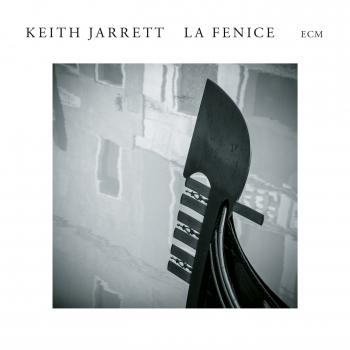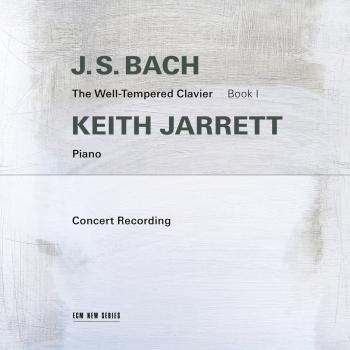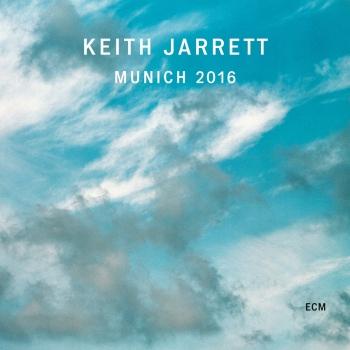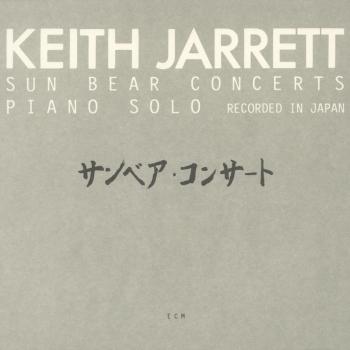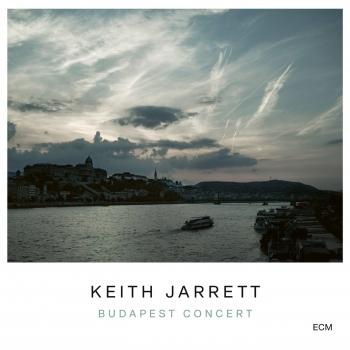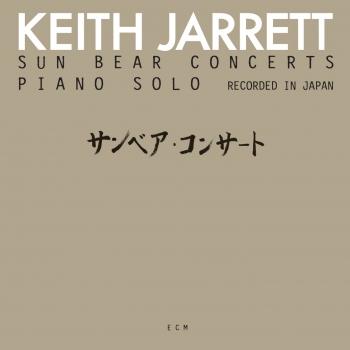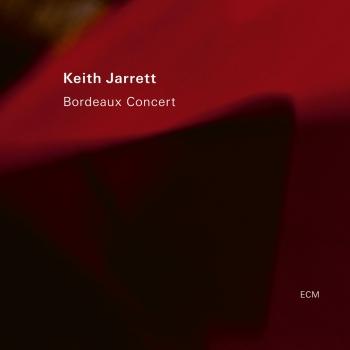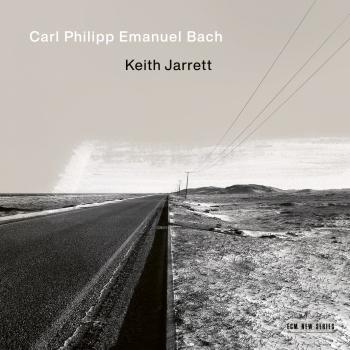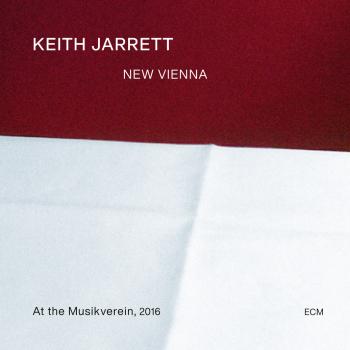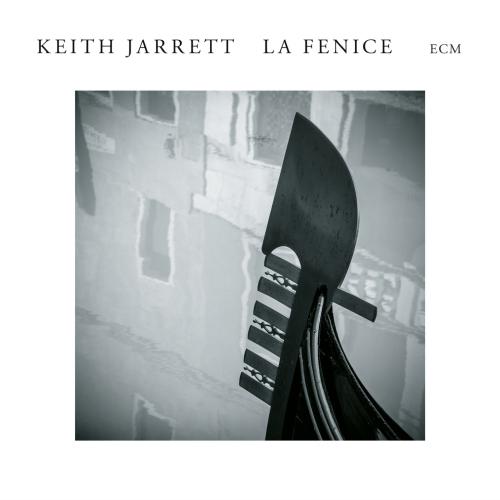
La Fenice (Live At Teatro La Fenice, Venice / 2006) Keith Jarrett
Album info
Album-Release:
2018
HRA-Release:
19.10.2018
Label: ECM Records
Genre: Instrumental
Subgenre: Piano
Artist: Keith Jarrett
Composer: Keith Jarrett
Album including Album cover Booklet (PDF)
I`m sorry!
Dear HIGHRESAUDIO Visitor,
due to territorial constraints and also different releases dates in each country you currently can`t purchase this album. We are updating our release dates twice a week. So, please feel free to check from time-to-time, if the album is available for your country.
We suggest, that you bookmark the album and use our Short List function.
Thank you for your understanding and patience.
Yours sincerely, HIGHRESAUDIO
- 1 Part I (Live At Teatro La Fenice, Venice / 2006) 17:44
- 2 Part II (Live At Teatro La Fenice, Venice / 2006) 03:26
- 3 Part III (Live At Teatro La Fenice, Venice / 2006) 09:47
- 4 Part IV (Live At Teatro La Fenice, Venice / 2006) 07:15
- 5 Part V (Live At Teatro La Fenice, Venice / 2006) 06:36
- 6 Part VI (Live At Teatro La Fenice, Venice / 2006) 13:32
- 7 The Sun Whose Rays (Live At Teatro La Fenice, Venice / 2006) 04:22
- 8 Part VII (Live At Teatro La Fenice, Venice / 2006) 05:30
- 9 Part VIII (Live At Teatro La Fenice, Venice / 2006) 07:15
- 10 My Wild Irish Rose (Live At Teatro La Fenice, Venice / 2006) 07:03
- 11 Stella By Starlight (Live At Teatro La Fenice, Venice / 2006) 06:33
- 12 Blossom (Live At Teatro La Fenice, Venice / 2006) 08:35
Info for La Fenice (Live At Teatro La Fenice, Venice / 2006)
Recorded in Venice, in 2006, ‘La Fenice’ finds Keith Jarrett unleashing a torrent of imagination, creating a masterpiece in a moment.
While there’s no doubt that Keith Jarrett is a supremely versatile musician at home in myriad musical contexts, his main source of fame has been his unaccompanied piano recitals. His ECM album The Köln Concert, a solo performance recorded in January 1975, remains a remarkable touchstone in the Pennsylvania-born pianist’s discography and continues to be one of Jarrett’s – and, indeed, ECM’s, best-selling albums. And it’s to the solo piano format that Jarrett has returned with his latest album, La Fenice.
In the four-plus decades between, Jarrett has issued several notable solo piano albums that are all unique but which have also reached high levels of inspired creativity, including Sun Bear Concerts (1976), La Scala (1995), The Carnegie Hall Concert (2005) and, more recently, A Multitude Of Angels (2016).
Standing alongside these, La Fenice (Italian for “the phoenix”) is a double-album that captures a 61-year-old Jarrett on a balmy July evening in 2006, playing for 97 minutes in front of 1,100 people in Venice’s Gran Teatro La Fenice, one of the great city’s most hallowed classical music venues.
As with all of Jarrett’s solo concerts, he begins with the musical equivalent of a blank canvas. After sitting down on the piano stool and composing himself for a minute, Jarrett closes his eyes and just lets musical ideas flow from his mind and into his fingers in a torrent of creativity. La Fenice starts with a turbulent atonal piece characterised by a stormy squall of notes which functions as the first section of a tremendously varied eight-part suite called ‘La Fenice’, which forms the largest portion of the concert.
Spontaneously composed, ‘La Fenice’ takes the listener on a mesmerising sonic odyssey that runs the gamut from intrepid exploration to quiet reflection, and from free jazz to blues and folk styles. There are other unexpected twists, too. In between ‘Part VI’ and ‘Part VII’ of the suite, Jarrett serves up a relatively short lyrical interlude in the shape of ‘The Sun Whose Rays’, a wistful interpretation of a song from Gilbert & Sullivan’s much-loved 19th-century comic opera The Mikado.
La Fenice culminates with three encore pieces. The first is ‘My Wild Irish Rose’, a traditional Celtic air that the pianist recorded for his 1998 studio LP, The Melody At Night, With You. Simple but elegant, it highlights Jarrett’s burnished lyricism. The piece is followed by a jaunty interpretation of the imperishable jazz standard ‘Stella By Starlight’, a song that Jarrett has also played with his celebrated Standards Trio.
The performance closes on a subdued but satisfying note with the pianist’s radiant solo version of ‘Blossom’, a delicate pastoral tune that he first recorded with his European Quartet on his influential 1974 ECM album, Belonging.
Above all else, La Fenice underlines Keith Jarrett’s skill and fluency as an improviser. His virtuosity as a pianist means that he can create a masterpiece in a moment, but there’s so much more to Jarrett’s performance than prodigious technique. His greatest skill is in communicating emotion and expressing his feelings through musical notes that touch the listener in a profound way. The music that comes through his fingers paints pictures and tells stories that all humans can relate and respond to. That is the very essence of Keith Jarrett’s genius, and, on La Fenice, its brilliance burns brightly for all to hear. (Charles Waring)
Keith Jarrett, piano
Keith Jarrett
At the end of 2008, Keith Jarrett added two concerts to his schedule at short notice – one at Paris’s Salle Pleyel (November 26), one at London’s Royal Festival Hall (December 1) . The music on “Testament” is from these concerts. Their range is compendious, Jarrett’s improvisational imagination continually uncovering new forms, in a music stirred by powerful emotions. In his liner notes, the pianist is forthright about the personal circumstances promoting a need to lose himself in the work once more.
He also reminds the reader/listener that “it is not natural to sit at a piano, bring no material, clear your mind completely of musical ideas and play something that is of lasting value and brand new.” This, however, has been the history and substance of the solo concerts since Jarrett initiated them, almost forty years ago . Over time their connection to ‘jazz’ has often become tenuous, yet Jarrett’s solo concerts, with the foregrounding of melody and the continual building, and relinquishing, of structure, are also removed from “free improvisation” as a genre. Jarrett’s solo work is effectively its own idiom, and has been subject to periodic revisions by the pianist. “In the early part of this decade, I tried to bring the format back: starting from nothing and building a universe.”
Since the “Radiance” album and the “Tokyo Solo” DVD of 2002 Jarrett has been adjusting the flow of the work, more often working with shorter blocks of material. “I continued to find a wealth of music inside this open format, stopping whenever the music told me to.” This approach distinguished “The Carnegie Hall Concert” (2006), and it is most effectively deployed in “Testament” , where the strongly-contrasting elements of the sections of the Paris concert in particular have the logic of a spontaneously-composed suite. The nerves-bared London performance (the first UK solo show in 18 years) is different again: “The concert went on and, though the beginning was a dark, searching, multi-tonal melodic triumph, by the end it somehow became a throbbing, never-to-be-repeated pulsing rock band of a concert (unless it was a church service, in which case, Hallelujah!).”
In the end, the improviser does what must be done. As Keith Jarrett said, a long time ago, “If you’re a rock climber, once you’re halfway up the face of the cliff, you have to keep moving, you have to keep going somewhere. And that’s what I do, I find a way.”
These days, however, Jarrett is rationing the number of ascents: there have been less than thirty solo concerts in the last decade, making “Testament” a special event indeed. Two further solo performances are scheduled for 2009 – at the Palais des Beaux Arts in Brussels on October 9, and at Berlin’s Philharmonie on October 12.
Booklet for La Fenice (Live At Teatro La Fenice, Venice / 2006)










